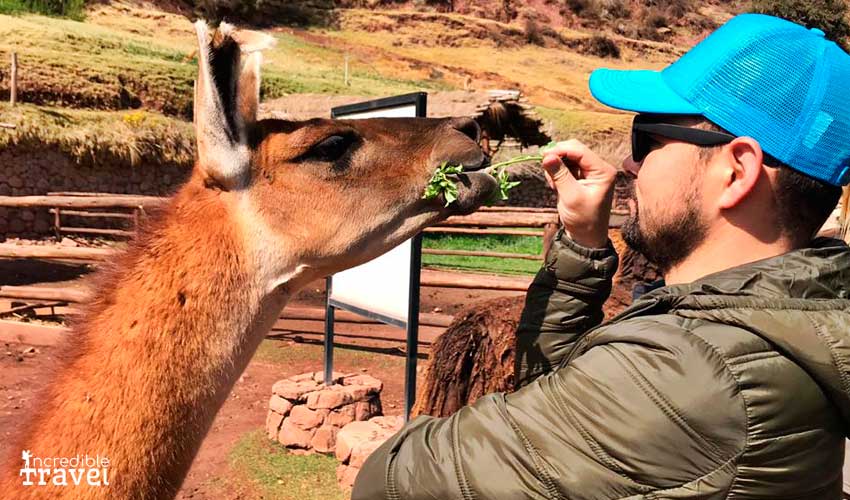The camelids are originally from North America, from where a group went to Asia by crossing the Bering Strait and gave rise to the Bactrian camels, a trunk from which, in turn, the dromedary arose. The other group populated the entire American continent, but over time it was confined to the south, where it acquired the characteristics that we know today. In recent decades, for economic reasons, a repopulation of camelids has begun in North America and there are already around 110,000 llamas and a much smaller number of alpacas in the United States.
The llama (Lama glama) is the largest of the South American camelids, adult males weigh up to 155 kilos and females just over 100 kilos. There are two well-defined breeds: the one with short hair and scarce fleece, called en ccara, q’ara (“peeled”), characterized by less development of fiber in the body and absence of it in the face, neck and legs; and the woolly, also known as ch’aku, which is the least common. There is also an intermediate type and as the llama can be crossed with the alpaca and the guanaco, various hybrids. Those with a male llama with a female alpaca are called huarizos, and those with a female llama with machi alpaca, mistis, the two being very similar. Llamas can live up to 29 years.
Domesticated for around 4,500 years, this beautiful gracious and serious step animal is no longer found in the wild. Until relatively recently, it was the most widely used cargo medium in the Andes. At present, it is raised mainly for its meat, although its leather, wool and as fertilizer and fuel are also used, even its excrement. The population of llamas in Peru is estimated at one million specimens; in Bolivia there are around two and a half million and in Argentina, Chile and Ecuador a very small number.
Despite not being as highly prized as alpaca, llama wool can be as fine as 27 or 28 microns and over 10 inches long, making it excellent for the textile industry as well. The meat is usually consumed dry in jerky or chalona.
The adaptation of camelids to the environmental conditions of the Andes has been such that they can survive in conditions that would be unbearable for, for example, sheep, since they can feed on ichu, the grass that mostly grows in high altitudes. Although today they live only in the mountains, in pre-Hispanic times llamas were also raised on the coast and there is archaeological evidence that this happened already 2,500 years before Christ. The coastal llamas were fed with corn leaves and crowns and with carob fruits and were used in transporting agricultural products.
This adaptation is a factor that acquires great importance today, as it makes the llama a possibility for the development of the most depressed communities in the country, those in the high areas of the departments of Puno, Apurimac, Cusco, Huancavelica, since their performance is much higher than that obtained from sheep or cattle and they do not require their care.

